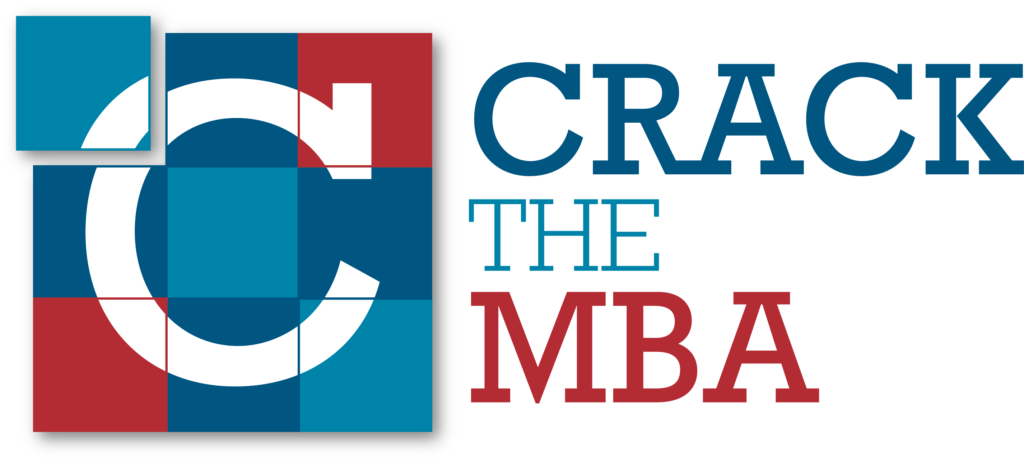Welcome to post number five of our six-part series on how to go about selecting the MBA program that’s right for you. In the previous posts, we discussed Academic, Financial & Professional considerations in this decision. Today’s post gets to the core of the experience-related factors which may influence your choice of business schools to apply to.
Student Experience Related Criteria
Location or Geography
The location of the school can have wide-ranging implications on your business school experience. You could prefer city or suburban campuses for a variety of reasons. City campuses typically have the advantage of greater exposure, access to a greater number of recruiters on-campus, a more vibrant social scene for eating out and partying among a host of other reasons. On the other hand, Suburban campuses have a more collegial environment as the area would typically be larger and a sense for a close knit community which oft times may not be possible with schools located in cities due to space constraints. As classic examples, think NYU’s Stern in terms of city school and University of Michigan’s Ross in terms of suburban campuses. Of course, you could look at location another way i.e. in terms of Europe vs. America vs. Asia which could be a decision triggered by personal or professional reasons. Even within the U.S., you could think of location in terms of East Coast vs. West Coast vs. Down South, etc.
Regardless of your reasons, Geographical Location is an important consideration and can have a defining impact on your experience. A friend of mine once had to leave the school due to pollen allergies which got triggered in the specific location he was attending school at. So, think your reasons through as it’s an important decision which would have huge ramifications for you going forward.
International Exposure
Most top programs have representation from a large number of countries. Regardless, should this be a factor, you should look into the details of the kind of class the school admits looking at historical figures. Here, we list the international student population as a % of total school population.
| School Name | International Students (%) |
| Wharton: Class of 2013 | 36% |
| Harvard Business School: Class of 2013 | 34% |
| Indian School of Business | 5.5% |
| HKUST: 2011 Intake | 93% |
Needless to say, one needs to take the percentages with a grain of salt as these will be higher for European schools given the low geographical barriers and the size of the country compared to United States. So, do factor these things in to your analysis. Another metric to look at could be “Countries Represented”. Furthermore, different schools may have define International Students differently. For example, Stanford’s GSB defines International Students as inclusive of Permanent Residents.
Another factor to consider in the International Exposure is the opportunity for travel available at the school. In addition to theoretical knowledge gained from the school’s website, it would be a good idea to talk to some recent graduates to find out the average amount of International exposure a student would indulge in. As an example, Wharton has a Global Immersion Program wherein students embark on a multi-week study tour in different countries such as India, Middle East, China, etc. Many schools have similar offerings so you will need to look at the offering for each school in order to get a sense for personal fit.
Gender Diversity
Despite significant advances in reducing the gap in number of male vs. female attendees to MBA programs, women are still under represented compared to their male counterparts in business schools. Should gender diversity be an important consideration in your decision, you may want to check out statistics for your selection of schools before applying. To give you a sense for how the numbers stack for a range of schools, see below.
| School Name | Gender Diversity (%) |
| Wharton: Class of 2013 | 45% |
| Harvard Business School: Class of 2013 | 39% |
| Indian School of Business | 29% |
| HKUST: 2011 Intake | 33% |
Family Situation
Your choice of school could also be influenced by your family situation. Should you be moving to school along with your partner, it would be important for the school to have a vibrant partner community. In this regard, schools with a larger population and higher median age may have a leg up as the partner club is more active owing to the sheer size of the class. As an example, Wharton has an extremely vibrant Partner’s Club which actively organizes events, luncheons and enables the partners and the children to foster deep, life-long relationships.
Length of Program
The length of the program is important as it makes a difference in terms of experience. The length of different programs varies from anywhere between 9 months to 2 years. Traditionally, U.S. programs have leaned towards being 2 year programs whereas programs in Europe tend to be shorter ~1 year or 15 months. The reason is that the average for U.S. business school students is typically lower than that of European schools. As a result, there is a preference for students to spend a greater amount of time immersing themselves in the experience, academics as well as professional aspects. As a caveat, there are exceptions. For instance, IESE in Spain is credited for Europe’s first 2-year program and Kellogg in USA has a 1 year program option also.
A good rule of thumb is that if you are a career changer or if your undergraduate degree is not in business, 2 year programs will afford you some breathing space
Within the same school, different start dates connote different experiences. As an example, Columbia has two intakes i.e. in Fall which is the regular 2 year MBA and also in Winter which is the Accelerated Program. The difference between the two lies in the opportunity to complete a summer internship. For students who are not looking to complete an internship, the latter may be ideal as it helps save 6 months. As an example, a student from a family business could benefit from such a program assuming they are planning to return to the family business and would prefer to save the 6 months. To look at some more examples, look at INSEAD, LBS, Kellogg, and Cornell.
Therefore, it becomes imperative to be mindful of start date as it corresponds to your particular need as it could make the difference between the ability to complete an internship or not.
Class Size
Different programs vary significantly in terms of their class size. This fact alone has huge ramifications on your experience. A smaller class engenders a close-knit community-type feeling where most people know each other. As an example, Stanford’s Class of 2012 had 389 students. On the other hand, Wharton’s Class of 2013 had 845 students and HBS’ Class of 2013 had 905 students. As is evident, Wharton and HBS have more than 2x the number of students Stanford has. As a result, these schools likely would have greater number of clubs, conferences, a bigger network. On the other hand, owing to its smaller class size, Stanford would have fewer students competing for resources. Hence, a bigger or smaller class size is very much dependent on personal preference and something I endorse everyone to take a deeper look into while selecting the MBA programs you wish to apply to.
As an indicative example of how class sizes vary at different schools, see below:
| School Name | Class Size |
| Wharton: Class of 2013 | 845 |
| Harvard Business School: Class of 2013 | 905 |
| Stanford GSB: Class of 2012 | 389 |
| Yale SOM: Class of 2013 | 228 |
| Indian School of Business: Class of 2012 | 573 |
| HKUST: 2011 Intake | 101 |
*Note: ISB’s class size number is actually the number of students accepted. Class size may be smaller if the yield is not 100% which is likely the case given HBS’ Class of 2013 had a yield of 89%
Extra-Curricular Opportunities
In addition to academic and professional immersion, extracurricular involvement is a big component that facilitates a fulfilling, all-rounded development and helps to shape your growth as a leader. Business school affords many opportunities to be involved in extra-curricular activities in the form of clubs, community service initiatives, conferences, trips, etc.
Depending on your interests, you can join pre-existing clubs or should there not be a club that caters to your interest, you can look at starting a new club. Chances are, if you’ve felt the need for a club, so have other people. Some of the popular Professional Clubs pertain to careers in Consulting, Investment Banking, Private Equity, Hedge Funds, Marketing. In terms of Personal / Cultural Clubs, there are clubs such as Beer Club, Wine Club, Scotch Club, Rugby Club, Flying Club, Photography Club, India Club, etc. which vary from school to school. In this matter, schools with larger class sizes have a slight advantage as the large student population tends to have varied enough interests to cater to many different tastes.
Community service initiatives can vary from school to school which could be something pertaining to building a playground for children in the neighborhood, planting a tree, etc.
Conferences are an integral part of the business school experience as they give you an opportunity to meet and network with some of the thought leaders from different industries. Conferences traditionally have been centered around professional interests such as Consulting Conference, Finance Conference, etc. and are often feeders for internship and full-time job opportunities. Should you have an interest in a certain industry, make sure to be updated on all conference-related activity such as opportunity to meet a company during lunch, coffee chat, informational interview, etc.
Trips could again be based around personal or professional interests. Furthermore, they could be organized by the school and/or by students/clubs. These are a great way to interact with your classmates, companies, alumni, etc. Some examples of trips that might be available are – trip to India, China, adventure trips, leisure trips, visiting a naval or military base, day trip to visit firms in a specific industry, exchange program, overseas consulting project for a company, etc.
Extra-curricular activities also provide excellent opportunities to lead initiatives. It is easy to get carried away and over commit to too many initiatives. You will do yourself a huge favor by being selective and being involved in limited things that you most care about and doing a good job in those.
Conclusion
As can be seen from the post above, business schools offer an insane number of opportunities to the point that one could get lost. It is important to know what you want out of the experience and select the schools you wish to apply to accordingly. One has to sometimes make choices between what they want to do and what they need to do. All in all, it is a good problem to have!
Having completed the different factors involved in our decision to select business schools namely, Academic, Financial, Professional, Extra-Curricular, in our sixth and final post of the series, we will look at specific examples of MBA aspirants and look at how they could go about shortlisting the schools to apply to.






